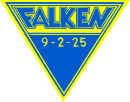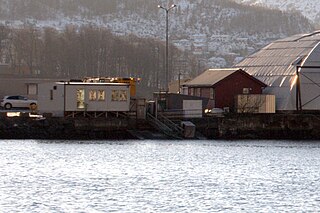Norvega Esperantista Ligo (Norsk Esperanto-Forbund, Norwegian Esperanto League) was founded in 1911. As the Norwegian arm of the Esperanto movement, its aim is to spread knowledge and use of the international language Esperanto. The league has a modest size of a couple of hundred members, and work done within NEL is mostly voluntary. The youth wing of NEL is Norvega Junularo Esperantista.
Affiliated with the largest international Esperanto organization, the Universala Esperanto-Asocio (UEA), the association has a permanent office in Oslo (also used by the Esperanto club of Oslo) and local subgroups scattered around the country. The Grupo Esperantista de Trondheim (Norwegian: Trondheim Esperantoklubb), for example, celebrated its centennial on June 16, 2007.
Since 1985 the NEL has published a magazine, Norvega Esperantisto (six issues per year).
Norwegian Esperanto history
Early history to 1911
The Norwegian Esperanto League was founded January 27, 1911 after earlier groundwork had been laid some years earlier by Haldor Midthus (1841-1906), Norway's first Esperantist. In 1886 Midthus, a teacher from Os in Hordaland, had learned Volapük, another constructed language. Having been active in the Volapük movement for ten years, he came to prefer Esperanto and became an enthusiastic proponent for Esperanto as the ideal international language. Midthus attended the first World Esperanto Congress in 1905 a few months before his death.
In 1906 the first Esperanto club in Kristiania (now Oslo) was established. The first members were students and temperance activists. The International Order of Good Templars, an organization devoted to ending the consumption of alcohol, had established lodges in Scandinavia beginning in 1877. [1] The Swedish parliamentarian Edvard Wavrinski, [2] the international president of the IOGT, wrote a series of articles on Esperanto for the IOGT publication Goodtemplarbladet, and several leading members of the alcohol-abstention movement showed interest.
In 1907 the German chemist Wilhelm Ostwald (who was later to win the Nobel Prize) visited the Royal Frederick University (now the University of Oslo). He lectured on Esperanto, which brought many new members to Kristiania's Esperanto club.
In the following years several new clubs were founded in Trondheim (1907), Narvik (1907), Bergen (1909) and Stavanger (1910). The club began in 1909 the publication of the journal Esperanto-bladet, and some members began to think of a national organization of Esperantists.
Between the wars
After the founding of the NEL, Norwegian Esperantists began a comprehensive program of language promotion and instruction. One of the early results (1912) was that Esperanto become an elective course at a business school (handelsskole) in Bergen. Esperanto activities broke off during World War I but were revived again in the mid-1920s. By the 1930s the Norwegian Esperanto League had grown to a membership of several thousand, with activities throughout Norway and with many participants in Esperanto courses.
World War II
In 1936 Esperanto had been prohibited in Nazi Germany. After the Nazi occupation of Norway beginning on April 9, 1940, the Norwegian parliament met in emergency session at Elverum and unanimously voted to delegate all legislative authority to King Haakon VII and the elected cabinet. With this legitimized government in exile in England, the occupying Nazis vested de facto power in Reichskommissar Josef Terboven and in the puppet government of Vidkun Quisling.
Persecuted Esperantists was forced underground but nevertheless continued with private meetings and study circles. In Vestlandet, in fact, the Norwegian Esperanto League successfully arranged a clandestine meeting in 1942 for 70 NEL delegates.
Certain German soldiers who knew Esperanto sometimes tried to make contact with the underground group but were politely turned away because of the war situation and the danger that Esperantists faced if exposed. In 1942, however, a deserting German Kriegsmarine sailor who spoke Esperanto knocked on the door of the Bergen Esperanto club seeking assistance in fleeing to Sweden. The Bergen club helped him, and he later became a member of the Swedish Esperanto Federation. [3]
Postwar developments in Norway
After the war Esperanto flowered again in Norway, and the NEL emerged a relatively strong organization. Esperanto was accepted as a subject for college study. In 1952 the 37th World Esperanto Congress, held in Oslo's newly completed city hall, attracted 1,600 delegates. King Haakon VII met the non-Norwegian delegates as they arrived at the Østbane railway station. The king jokingly remarked that the Esperantists were easy to get along with, but it was impossible to understand what they were saying. The 76th Congress, held in Bergen in 1991, drew 2,400 delegates.
In November 2006, Norwegian Esperantists arranged a conference call by telephone among delegates in Oslo, Bergen, Stavanger, Trondheim and Korgen (Hemnes); the teleconference attendees heard a talk on Esperanto history in Norway delivered by Elna Matland. [4]
Today the NEL has active branches in Bergen, Bryne, Hamar, Kristiansand, Oslo, Sarpsborg, Stavanger, Tromsø and Trondheim. The current president of the NEL is Jardar Eggesbø Abrahamsen. At the same time as the organization continues to publish Norvega Esperantisto, the NEL, along with other Esperantist groups, is making more and more information available on the Internet.
Esperanto dictionaries
In the 1930s Ragnvald Rian had edited the first Norwegian-Esperanto dictionary. With the collaboration of Erling Anker Haugen, a second edition was published in 1963. As many Esperantists in Norway now complain that this book is old, lacks many ordinary words and has an old-fashioned character that may tend to put Esperanto in a bad light, the Norwegian Esperanto League has made its top priority the publication of a new dictionary. They have delegated the task to an editorial committee from the Grupo Esperantista de Trondheim (GET) consisting of Herman Ranes, Jardar Eggesbø Abrahamsen and Kjell Heggvold Ullestad.
Erling Anker Haugen's notes
When the 1963 book was published, two copies were bound with extra blank pages sewn between the leaves of the book. The idea had been to complete the books with new words and expressions that could not be found in the printed pages. The notations were to eventually find a new home in a future, revised edition.
The younger of the 1963 edition authors, Erling Haugen, began even before the dictionary was published to collect words and expressions from Esperanto journals and other literature. Those not already in the dictionary were carefully recorded on the blank pages in the specially bound copies. Haugen continued with this labour until his death.
Haugen planned these notations as the basis of an eventual revision of the Esperanto dictionary. Because he planned to make the revision himself, he only noted words and idioms he observed in actual use. He did not evaluate them for inclusion in the printed dictionary, a task he postponed till it was time for a new edition. After some time, however, he realized he would not live to see a new edition.
Towards the end of his life he was encouraged to see young people joining the greybeards of the GET, the Trondheim Esperanto club. He proclaimed jovially, "You have much to learn when it comes to Esperanto." He donated all his notes to GET, with a plea to handle the materials carefully, as he had not been able to evaluate the quality of the collection he had amassed, a task he left for new generations. On his death in 1989, the tireless lexicographer Erling Haugen left the GET his materials containing over 20,000 words not found in the earlier 1963 dictionary.
Computerized database
Already in the time of Erling Anker Haugen, Ulf Lunde had contemplated organizing the word corpus into a database. The Trondheim Esperanto club (GET) had sought funds from the Rolf Uhlen legacy and received a grant of 35,000 kroner to help purchase a computer and to make a usable computer program for entering the data, beginning with the previously typeset book. Haugen's handwritten notations would be clarified and transcribed later, which later proved easier said than done.
The work was slow, and the editorial committee saw no end to their task. One of the Esperanto students in Trondheim, Agnar Tore Vaaje, took an interest in the old notes and was also interested in finding a practical technical solution. Together with Nils Utne and Ulf Lunde, he set to work. Vaaje learned Esperanto as he deciphered Haugen's handwriting, entered records and kept the computer running. Despite eventually becoming fluent in Esperanto, he did not have sufficient knowledge of Esperanto to revise the materials further. Here the elderly, experienced Nils Utne came into the picture. He systematized the materials, and devised workable technical solutions for ordering the great data corpus to generate a dictionary. It was a major endeavour he devoted years of life to, but did not accomplish, before he died in 1999.
After the death of Utne, the GET tried in several ways to revive the dictionary project. Because carrying out the work required a person possessing both technical knowledge of work methods and subject knowledge in lexicography, it was difficult to proceed efficiently. Those with such expertise had other obligations that demanded most of their time and work capacity. Still, the club had chosen a dictionary committee that was committed to push the project forward. In order that the work would not stagnate, they began proofreading at club meetings and on their days off from work. This attracted many participants for several years, but the corpus was huge, and the feeling of inadequacy had slowed the work when Kjell Heggvold Ullestad came into the picture.

The Esperanto flag and other Esperanto symbols have seen much consistency over the time of the language's existence, though a few variations in exact flag patterning and symbology have been seen. The main flag of Esperanto, featuring the Verda Stelo, was adopted in 1905 for use as a symbol of mutual recognition among Esperantists. This flag is used by most Esperantists, though the jubilea simbolo has been more recently proposed in 1987 as an alternative.

Coast Air AS was a regional airline based at Haugesund Airport, Karmøy in Norway. It was Norway's fourth largest airline and operated domestic services within Norway, in addition to international services. Routes were concentrated along the West Coast, as well as some public service obligation contracts in Southern Norway. The company had a fleet of de Havilland Canada Twin Otter aircraft, later replaced with Jetstream 31s and ATR 42s.
Erling Falk was a Norwegian politician, ideologist and writer. He was active in the Norwegian Students' Society, the Norwegian Labour Party and the Communist Party, but is best known as a leading figure in the group Mot Dag, who issued a periodical of the same name. He also translated Das Kapital.

Tron Øgrim was a Norwegian journalist, author and politician. He was active in Socialist Youth Union from 1965 to 1973, and a central figure in the Workers' Communist Party from 1973 to 1984. In addition to being a politician, Øgrim was an author of political works and several science fiction novels. He was notable for communicating in a non-standard eastern Oslo dialect, even where he might have been expected to use standardized Bokmål.
Vladimír von Szmurlo was a Russian Esperantist and railway engineer.

Max Manus: Man of War is a 2008 Norwegian biographical war film based on the real events of the life of resistance fighter Max Manus. The story follows Manus from the Winter War against the Soviet Union, through the outbreak of World War II and the occupation of Norway by Nazi Germany until peacetime in 1945. The film is based on Max Manus's own books Det vil helst gå godt and Det blir alvor, as well as other accounts and historical documentation. The film stays largely historically accurate, but omits some events, and moves some of the supporting characters around to show them taking part in events in place of others. The production included around 1,800 extras and 2,000 workers behind the cameras.
Nils Andreas Økland was a Norwegian Esperantist and teacher in Stord (Hordaland), Norway. He spent some years in his youth on the island Utsira, where his father was a school teacher. Nils Økland was married to Hanna Olava Bergstøl, and they had 3 sons. His father Matthias Larsen Økland was also a school teacher and a church chorister; his mother was Signi Nilsdatter from Eidsvåg. Having learned Esperanto indirectly through his friend Haldor Midthus by 1904, he served as president on the executive council of Stord's Norwegian Esperanto League branch.

Michel Duc Goninaz was a French Esperantist known worldwide for his 2002 revision of La Plena Ilustrita Vortaro de Esperanto.

Braathens South American & Far East Airtransport A/S or Braathens SAFE was founded by ship-owner Ludvig G. Braathen in 1946. It started as a charter airline based at Oslo Airport, Gardermoen in Norway, flying to destinations in the Far East and in South America. At first the airline used Douglas DC-4s, and later also Douglas DC-3s. In 1948, the airline moved to Oslo Airport, Fornebu and started regular scheduled flights to the Far East. In 1952, the airline started cooperation with the Icelandic airline Loftleidir, where until 1960 the two airlines in cooperation flew flights to Reykjavík. Domestic services started in 1951, using de Havilland Herons on a route from Oslo to Stavanger via Tønsberg. Braathens SAFE also established at Stavanger Airport, Sola. A second route was started two years later to Trondheim. The Heron routes also stopped in Farsund, Kristiansand, Notodden to Stavanger and Hamar, Røros to Trondheim.

Sportsklubben Falken is a Norwegian speed skating club from Trondheim.

Karoline Bjørnson was a Norwegian actress. She is best known as the wife and supporter of poet, playwright, popular speaker and Nobel laureate Bjørnstjerne Bjørnson.
The 1947 Norwegian Football Cup was the 42nd season of the Norwegian annual knockout football tournament. The tournament was open for all members of NFF, except those from Northern Norway. The final was played at Brann Stadion in Bergen on 19 October 1947, and Skeid secured their first title with a 2-0 win against Viking. Skeid had previously played two cup finals but lost both in 1939 and 1940, while it was Viking's second appearance in the final, having previously lost in 1933. Lyn were the defending champions, but were eliminated by Brann in the fourth round.

Erling Gjone was a Norwegian architectural historian and antiquarian. Gjone made significant contributions to the preservation of medieval-era Norwegian buildings. He is most noted for his work with the restoration of the Archbishop's Palace (Erkebispegården) in Trondheim.

Vestlandske Luftfartsselskap A/S, trading internationally as West Norway Airlines, was an airline based in Bergen, Norway, which operated from 1946 to 1957. The company operated almost entirely a fleet of seaplanes out of its base at Bergen Airport, Sandviken. From 1951 it operated scheduled services along the West Coast as summer-only services.

Bergen Airport, Sandviken is a water airport and heliport situated in the Sandviken neighborhood of Bergen, Norway. The aerodrome is located on the artificial peninsula of Kristiansholm. It is currently serving seaplanes and helicopters operated by Fonnafly aimed at air taxi services at cruise ship tourists. The airport is owned by Bergen Municipality through Bergen Port Authority and is part of the Bergen Port. Operations are carried out by Fonnafly.
Árni Böðvarsson was an Icelandic educator, grammarian, and dictionary editor. He edited the first standard dictionary of Icelandic, co-edited a Russian-Icelandic dictionary, and was also an Esperantist, editor of an Icelandic-Esperanto dictionary, a long-time member of the Universal Esperanto Association (UEA), co-founder of the Reykjavík Esperanto society, and secretary of the Icelandic Esperanto Association.
Leon Aurdal was a Norwegian painter.

Ivar Braut is a Norwegian theologian and priest. He was the Bishop of the Diocese of Stavanger from 2017-2019. He is considered to be a conservative bishop, a contrast to his predecessor.

The following outline is provided as an overview of and topical guide to Esperanto:












